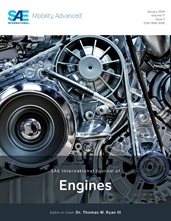The ongoing pursuit of improved engine efficiency and emissions are driving gasoline low-pressure loop EGR systems into production around the globe. To minimize inevitable downsides of cooled EGR while maintaining its advantages, the Dedicated EGR (D-EGR®) engine was developed. The core of the D-EGR engine development focused on a unique concept that combines the efficiency improvements associated with recirculated exhaust gas and the efficiency improvements associated with fuel reformation. To outline the differences of the new engine concept with a conventional low-pressure loop (LPL) EGR setup, a turbocharged 2.0 L PFI engine was modified to operate in both modes and also compared to the baseline. The first part of the cooled EGR engine concept comparison investigates efficiency, emissions, combustion stability, and robustness at throttled part load conditions. In addition, the LPL EGR configuration was supplemented with bottled H2 / CO to examine if the D-EGR engine performance can be matched. The results show the D-EGR engine can tolerate higher EGR dilution levels, enable faster burn rates, reduce cycle-to-cycle variations and can further improve efficiency and emissions. Additionally, the D-EGR technology decreases the ignition energy requirements. Moreover, by adding the bottled reformate to the LPL EGR engine, the performance of the D-EGR setup can be simulated.
